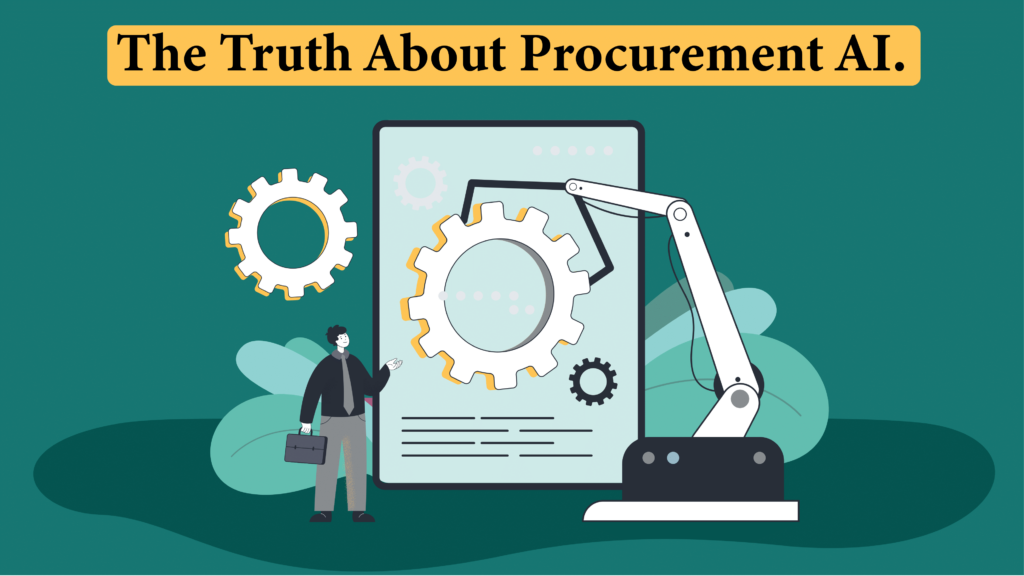Generative AI stands out as the most prominent and influential technology reshaping the procurement industry—and many others—in 2024.
According to McKinsey, AI driven by large language models (LLMs) is the key to unlocking new avenues of value.
As AI continues to transform the procurement landscape, many businesses are eager to join the ‘Procurement AI’ trend.
However, misconceptions about AI’s role in procurement can create hesitation; unfounded assumptions, half-truths, and plain myths about procurement AI can even hold back businesses from fully embracing this transformative technology.
So, it’s time to separate fact from fiction.
Misconception #1: Procurement AI is too expensive and only suitable for large-scale businesses
Some business owners believe that AI is prohibitively expensive and complex to implement. This may have been true years ago, but recent advancements in Large Language Models (LLMs) and other technologies have changed the landscape.
Procurement-as-a-Service (subscription-based) models have made AI more affordable and accessible. Companies no longer need to invest in heavy, upfront infrastructure. Instead, they can adopt scalable solutions and start small.
Misconception #2: Procurement AI will instantly transform our procurement processes
Many business owners assume that an AI-driven procurement platform will deliver instant results. After all, this technology is fast and efficient. But the reality is a bit more nuanced
AI implementation is an iterative process that requires ongoing learning, data quality improvements, and regular performance reviews. It’s not a magic solution; businesses must follow best practices for success.
Like any other digital procurement solution, Procurement AI requires continuous collaboration with procurement teams to adapt and improve. Over time, as the models learn and evolve, companies can expect more refined and reliable outcomes.
Misconception #3: Using AI in procurement requires a complete revamp of existing processes
Many assume that integrating AI into the procurement cycle means starting from scratch. But that’s not always the case.
Procurement AI can be integrated with legacy systems and processes to leverage existing data sources and infrastructure.
Procurement platforms with modular AI tools may also allow businesses to address specific pain points without disrupting current workflows.
In the case of Lilo, for instance, hospitality and commercial real estate businesses often begin by using our AI engine for quick cost comparisons and supplier selection. Over time, they expand to other features like demand forecasting and custom order guides.
Businesses can adopt procurement AI gradually; they can target specific areas where it will have the most impact. This approach minimizes disruption while maximizing the return on existing investments.
Misconception #4: Procurement AI solutions are not transparent
A lack of transparency can lead to distrust and hesitation to adopt new technology. But, procurement AI is NOT a black box. Responsible AI-driven solutions like Lilo are designed to ensure transparency and fairness.
Such solutions come with explainable algorithms; so business owners and procurement leaders can understand how AI makes decisions, executes tasks, or generates insights. Bias mitigation techniques are also in place that reduce the risk of biased outcomes.
Misconception #5: Implementing AI solutions means businesses will no longer need procurement professionals
The fear that AI will replace jobs is widespread, and procurement is no exception. But this notion is far from the truth.
In the long run, the World Economic Forum (WEF) predicts that while AI may displace some job roles, it will also create new ones.
For now, procurement AI isn’t here to take over; it’s here to augment human expertise.
AI tools help procurement teams automate routine tasks, like invoice processing, reordering, spend analysis, demand forecasting, contract reviews, etc. This allows procurement professionals to focus on more strategic functions.


